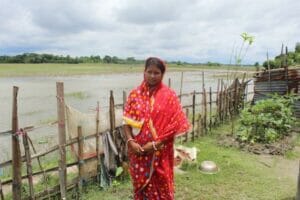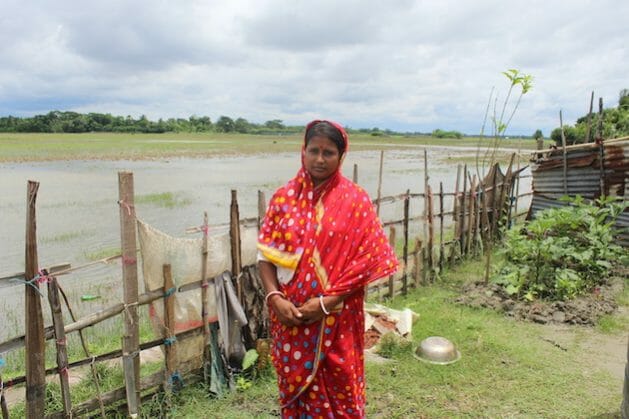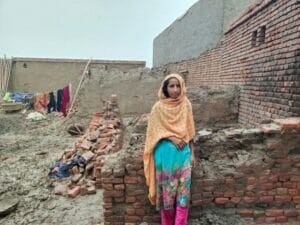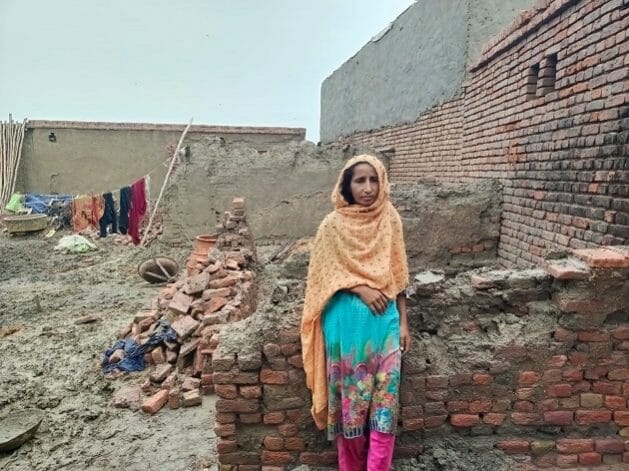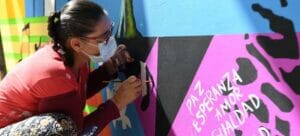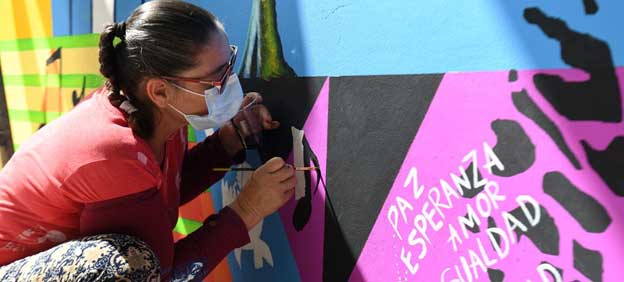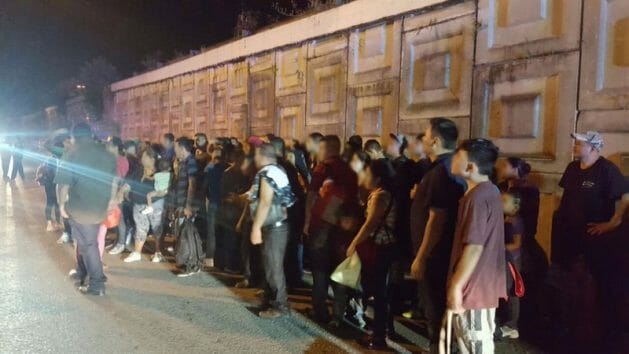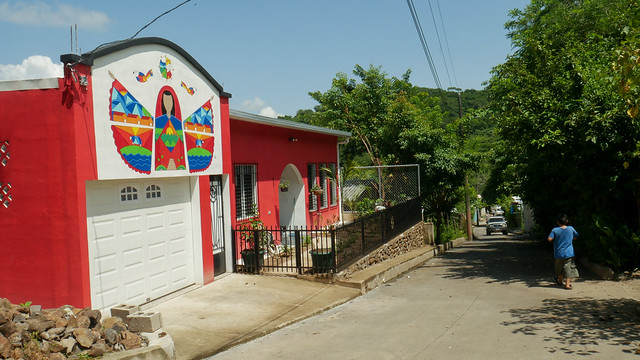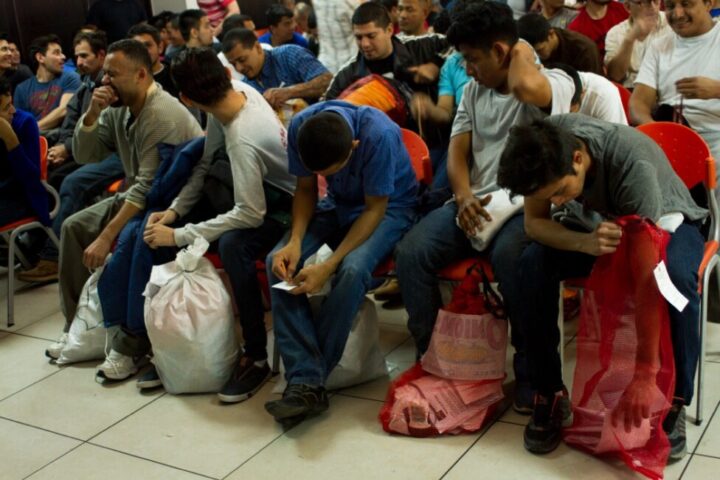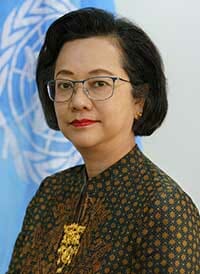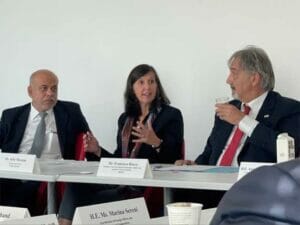
Civil Society, Development & Aid, Editors’ Choice, Featured, Food and Agriculture, Global, Headlines, Population, Poverty & SDGs, TerraViva United Nations
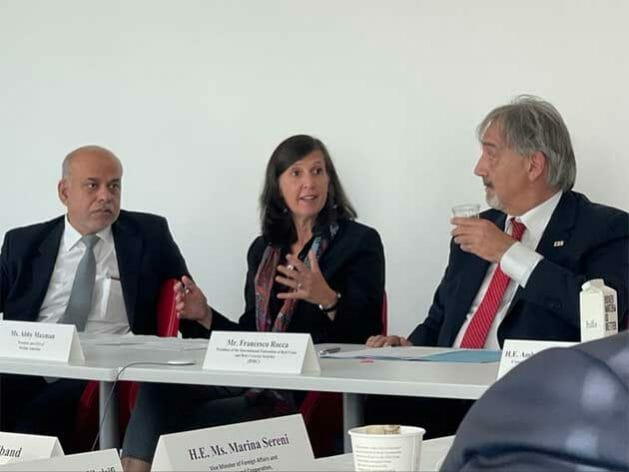
Conversation at the UN General Assembly Side Event on Responding to the Urgent Humanitarian Needs in the Horn of Africa. Credit: Karelia Pallan/Oxfam
– Last week, as world leaders gathered in New York for the 77th United Nations General Assembly, one topic came up more than most: looming famine. That’s because despite a global commitment to make famine a relic of the past, it is once again knocking at our door.
In Somaliland two weeks ago, I witnessed communities past their breaking points. Grandparents there told me they could not recall a drought like this in their lifetimes.
At UNGA, I was honored to take part in many discussions on this and other topics – in particular a panel about the urgent humanitarian needs in the Horn of Africa. The region is facing several interlinked issues, including hunger, conflict, climate, and COVID-19. As we discuss – and more importantly, respond to – the crisis, we should keep in mind three themes: the urgency of the moment, the need for more access and more funding, and the implementation of a systemic solution.
The humanitarian crisis in the Horn needs to be at the top of the international agenda, and we need commitment, resources and action urgently. We have seen the warning signs that famine is coming for quite some time – and now we have been warned that it could be declared in Somalia as soon as next month.
Often, the international community is reactionary to crises, but this time we must also be anticipatory in assessing and responding to the needs of the region. In my trip to Somaliland, I spoke to farmers, pastoralists, and visited communities impacted by conflict, climate, and COVID-19. It was my first visit back to Somaliland in more than 20 years, which offered an interesting perspective of the arc of change.
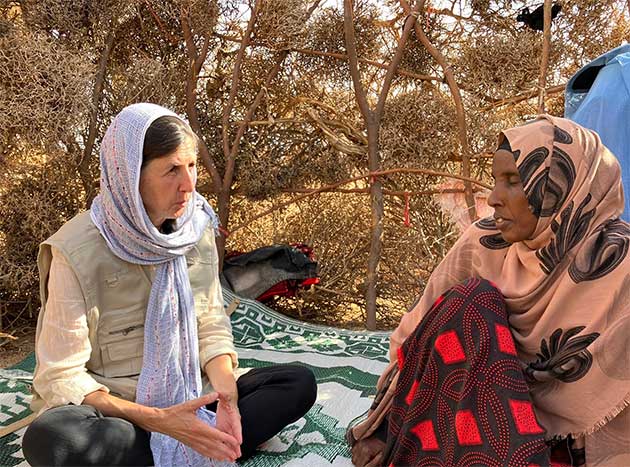
Abby Maxman speaks with Safia, a woman forced to leave her home in Somaliland amid the drought and growing hunger. Credit: Chris Hufstader/Oxfam
Their shared experience is clear: their livelihoods and way of life – and that of their ancestors – are in danger and the need for action now is more urgent than ever. It is dispiriting that these preventable tragedies continue to repeat when the world has the resources and know-how to prevent them.
I spoke with Safia, a 38-year-old divorced mother of eight children, who lost 90% of her livestock. She stayed as long as she could in her community until she felt unsafe as the weak and dead livestock attracted hyenas at night, compelling her to make the five-day journey to reach the Dur-Dur IDP (Internally Displaced Person) camp near Burao.
At Dur Dur they were welcomed with clean water, some food, and materials to build a shelter. She and her children have been there for about three months. They are struggling to get enough food and might eat one meal a day, if they can. Oxfam and others are there offering support, but it’s not nearly enough to meet their basic needs.
Safia’s experience was just one of countless more of those who are bearing the brunt of the dual global hunger and climate crises that has been brought on by distant forces who are prioritizing profits over people and planet.
Earlier this year, Oxfam’s research estimated that one person is dying from acute hunger in the region every 48 seconds. Since then, the situation has only gotten worse. We have a narrow window of opportunity to stave off hunger in the horn. It is not too late to avert disaster, but more needs to be done immediately.
We know that anticipatory action saves lives, livelihoods, and scarce aid money, and across Oxfam and with our partners we have been sounding the alarm of this slow, onset emergency at local, national, and global levels for the past two years. Yet we are witnessing a system that is failing the people who are least responsible for this crisis.
We need more access and a lot more funding that supports frontline organizations and leaders. During the panel, it was encouraging to hear Under-Secretary-General for Humanitarian Affairs and Emergency Relief Coordinator Second Martin Griffiths put such emphasis on funding local organizations and leaders who have the knowledge, access, and courage to make real impact.
Local organizations know where the most vulnerable people are located, they can reach disaster zones quickly, and they understand the languages, cultures, geography, and political realities of the affected communities far better than outsiders.
These local leaders should be given the resources and space to make decisions to have the most effective response that will save lives now and in the long run. This may mean that international donors and organizations need to be more flexible in how they coordinate, fund, and implement a humanitarian response. The old way may not be the most effective – in fact we know it is not – especially where there are access challenges.
Finally, we must take a systemic approach in tackling these issues. We know that hunger, climate, and conflict do not happen in silos – they are inextricably linked. We must make sure we are fighting these interlinked crises, especially hunger and climate, together.
Climate change is causing more extreme weather events like droughts, floods, and heatwaves, which devastate crops and displace vulnerable communities. In fact, hunger has more than doubled in 10 of the worst climate hotspots in recent years.
Countries that have contributed the least to emissions are bearing the worst impacts of the climate crisis, while fossil fuel companies see record-breaking profits. Less than 18 days of profits from fossil fuel companies could cover the whole UN humanitarian appeal of $48.82 billion for 2022.
These conversations and convenings are important, but we must do more than raise the alarm – we must see action to follow them up. I hope that leaders recommit the political will to fulfill their moral obligation to meet this crisis in the Horn head on.
Safia is doing all she can to ensure her family’s survival – we must see leaders do all in their power, right now, to make sure she and millions more get the urgent aid they need now to survive, and see their right to a safe, healthy future recognized and realized in years to come.
Abby Maxman is President and CEO Oxfam America.
IPS UN Bureau

